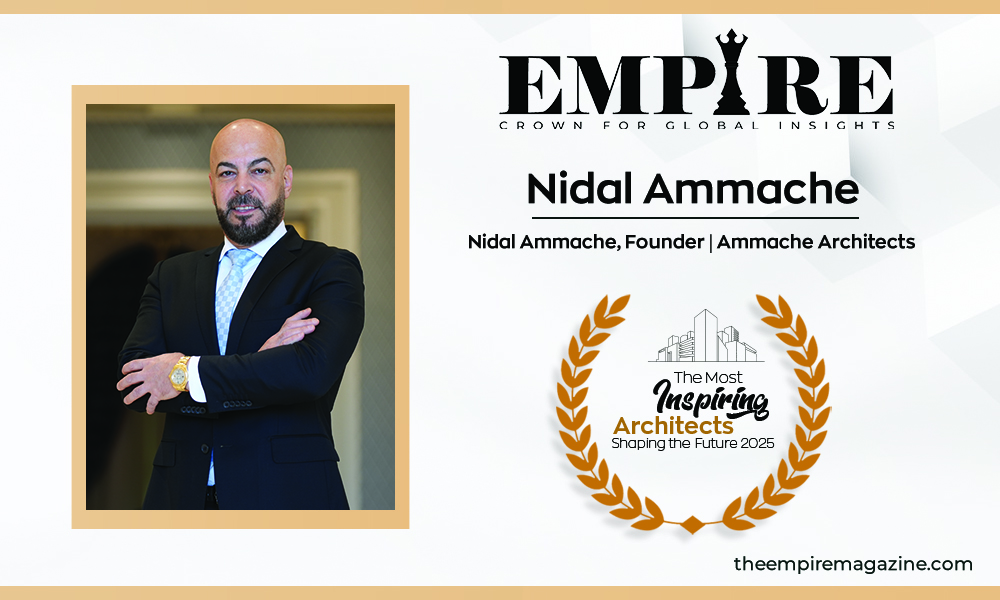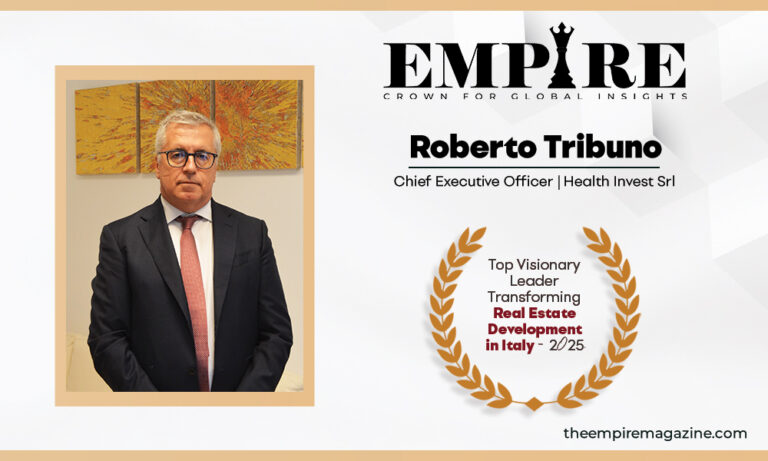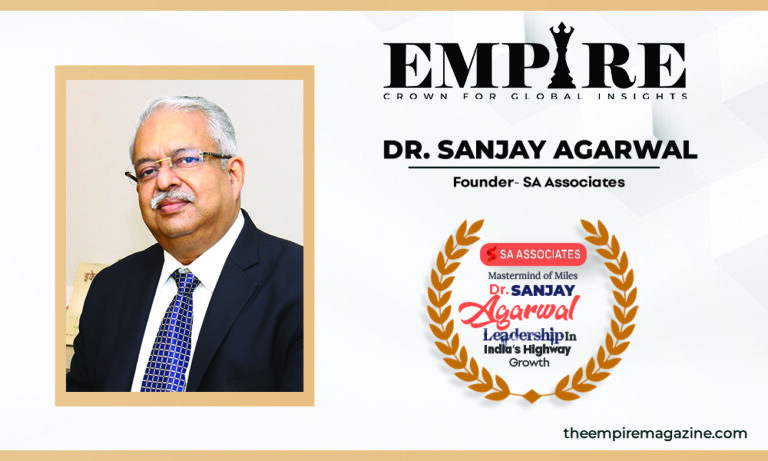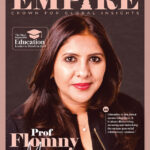Nidal Ammache: Building a Legacy Through Relentless Ambition

Cities are more than just collections of buildings—they’re living, evolving expressions of human ambition. Every skyline tells a story, not just of progress, but of the minds that dared to imagine something more. Behind every bold design and every space that feels like it belongs, there’s an architect who saw the potential before the first brick was laid. In Melbourne, one of those visionaries is Nidal Ammache, Founder of Ammache Architects.
With over 32 years in the field, Nidal has not only witnessed the evolution of architecture but actively shaped it, emerging as a respected name in Melbourne’s design landscape. As a key force behind Ammache Architects, he has delivered close to $900 million worth of projects across the city, each reflecting his mastery of form, function, and urban context. Yet, it’s his relentless ambition that truly defines him.
Even after hundreds of completed works, Nidal continues to chase new creative horizons, treating architecture not as a job, but as an enduring journey of innovation and impact. For him, every blueprint is simply the start of something greater.
Designing Happiness, One Building at a Time
Nidal, a seasoned architect since 1998, is based in Melbourne, Australia. As the founder of Ammache Architects, he has dedicated decades to shaping spaces that truly matter. His firm handles a diverse range of projects, including financial and commercial buildings, luxury homes, industrial facilities, and a particularly strong focus on childcare centers.
His practice also extends into high-density residential developments, mixed-use projects, hotels, and specialized accommodations for individuals with disabilities. In addition, his portfolio includes unique animal-related facilities, such as vet clinics, breeding centers, and even hotel-style lodgings for pets.
For him, architecture is about contributing to human happiness. He believes architects are gifted with the responsibility to design spaces that support people’s lives, places where they eat, sleep, work, and entertain. According to him, a well-designed space should reflect the culture and comfort of those who inhabit it.
Nidal’s motivation lies in the impact of meaningful design. He sees architecture not just as construction but as a deeply human endeavor, creating environments that foster joy, well-being, and a sense of belonging.
Rewriting the Narrative of Everyday Design
Nidal’s work is driven by a deep desire to create meaningful change, not just in architecture, but in how people interact with the spaces around them. For him, that kind of transformation requires more than technical skill. It calls for a deep understanding of agriculture, culture, and the layered histories that shape each country. These elements, he believes, are essential to building spaces that truly resonate with people.
What inspires Nidal the most is his intuitive grasp of human nature and life itself. That sensitivity adds a powerful dimension to his architecture, allowing him to create thoughtful and emotionally intelligent spaces. When designing, he weaves in knowledge of the past, present, and cultural identity. To him, architecture is not just about structure, it’s about understanding minds, responding to needs, and creating environments that nurture happiness.
Nidal’s vision stretches beyond conventional markers of success. Though he’s contributed to several impactful designs, he feels that Australia, with all its architectural promise, sometimes feels creatively limiting due to its regulations. He dreams of designing iconic buildings in places where there’s more freedom to innovate.
Still, there are moments he reflects on with pride. One small yet meaningful example dates back nearly two decades. At a time when kitchen splashbacks were typically designed as solid walls, Nidal proposed a radical shift, integrating glass panels, fish tanks, or windows to bring in nature. He imagined a scenario where, instead of staring at a blank wall, someone cooking could enjoy a view of fish, flowers, or a backyard garden. It wasn’t easy to convince clients at first, but one eventually embraced the idea. Fast forward twenty years, and now this design concept is appearing in kitchens across Melbourne.
Today, Nidal remains deeply satisfied with his team’s ability to meet client needs and navigate the approval process. But his true ambition lies ahead, designing iconic, expressive buildings in places where architecture can be unshackled from rigid frameworks and allowed to soar.
Balancing Creativity with Compliance
In the early stages of his professional journey, Nidal faced a number of tough challenges, chief among them, the layers of regulation and navigating market demand. Working in Melbourne, known for its strict standards and professional rigor, Nidal found himself up against a maze of local council requirements. Getting a project off the ground meant first securing a land permit, a process that involved heavy oversight and often forced him to revise original design concepts just to meet approval.
He recalls how difficult it was to strike a balance, satisfying both the client and the council, while still delivering a high-quality design that was commercially viable. That balancing act, he explains, remains a challenge to this day. In fact, the hurdles have only grown steeper over time.
Nidal contrasts the process in Melbourne with his experiences abroad, particularly in Dubai. There, he says, the same-sized plot of land offers a completely different experience. Clients provide a brief, and there’s room to explore architectural ideas freely. Planning permits can be secured in as little as half a week, compared to the year-long ordeal often faced in Melbourne.
Pioneering a Personal Philosophy in Architecture
What sets Nidal apart in the architectural space is something quite fundamental: a clear and steady vision. In a field where many variables intersect, from design to engineering, from regulation to client expectations, he finds clarity by anchoring his approach in thoughtful, purpose-driven design.
Working in Australia, Nidal has gained a strong understanding of the country’s engineering and construction frameworks. He acknowledges that engineers work under a significant amount of responsibility, particularly due to the regulatory standards that hold them accountable for structural integrity over long periods. Because of this, engineering solutions often need to meet strict compliance requirements, a necessary approach that sometimes shapes how architects can execute their ideas.
Rather than seeing this as a limitation, Nidal views it as part of the broader collaboration. It’s about understanding how architectural vision can align with technical realities to produce designs that are both inspiring and buildable.
When it comes to influence, Nidal’s journey is largely self-directed. He hasn’t had formal mentors or family members in the field; instead, he has spent years refining his own philosophy, investing in learning and developing his voice as a designer.
His approach reflects a balance between creative drive and practical awareness, a mindset shaped not by tradition, but by experience and thoughtful observation.
Shaping Spaces, Shaping Souls
To young and emerging architects, Nidal offers a heartfelt piece of advice: develop your own architectural philosophy and never compromise it, no matter how tempting a project might seem. He urges them to create designs that are inclusive, that resonate with all kinds of people, and to stay true to their vision.
In the early days, he admits, everyone takes on projects out of necessity. Clients with tight budgets and limited vision are often part of the starting phase. But Nidal encourages newcomers not to let go of quality. “If a client doesn’t align with your philosophy,” he says, “wait for the next one.” In his eyes, good architecture shouldn’t be diluted for quick wins.
He’s also candid about the influence clients have in shaping an architect’s career. “The difference between an average and a remarkable project often lies in the client,” Nidal shares. A $200,000 budget will never unlock the same possibilities as a $5 million one. That’s why, he believes, the best architects in the world aren’t just talented, they’re lucky. Lucky to have clients who share their vision, and give them space to create.
Today, Nidal leads a close-knit team of 12, with plans to expand. He’s eager to bring in fresh, passionate talent, and young architects who are driven by purpose, not just aesthetics. For him, the future of architecture lies in the hands of those who understand that their responsibility goes beyond design, it’s about shaping a better, more thoughtful world.
A Vision That Travels Far
For Nidal, the pursuit of architectural expression has never been limited by geography. Though Melbourne has long been a creative home, the past six months have seen him venturing far beyond its skyline. With a quiet determination, he’s been exploring new horizons, new cities, new cultures, new possibilities.
His vision has always extended further than most could imagine. Africa has captured his attention, not just as a place on the map but as fertile ground where his ideas can come to life. After more than three decades immersed in the craft, Nidal feels it’s finally time, time to manifest the full extent of his philosophy, time to create without limits.
The global response to his ideas has been deeply affirming. As Nidal describes it, the resonance he’s now seeing with his architectural approach and philosophy is unlike anything before. The world, it seems, is ready for change, and he’s more than ready to be part of shaping it.
Nidal has earned multiple design accolades, including the prestigious A’ Design Award. Another moment of pride? Being credited with Melbourne’s best sustainable breakfast, proof that his design philosophy touches more than just buildings; it reaches into lifestyle. When asked how he’d like to be remembered, Nidal says, “If I can achieve what I’ve set out to do. I hope people remember that I brought happiness into their lives through design.” For him, that’s the essence of legacy, not in fame or fortune, but in how spaces make people feel.
Follow Nidal Ammache on LinkedIn








